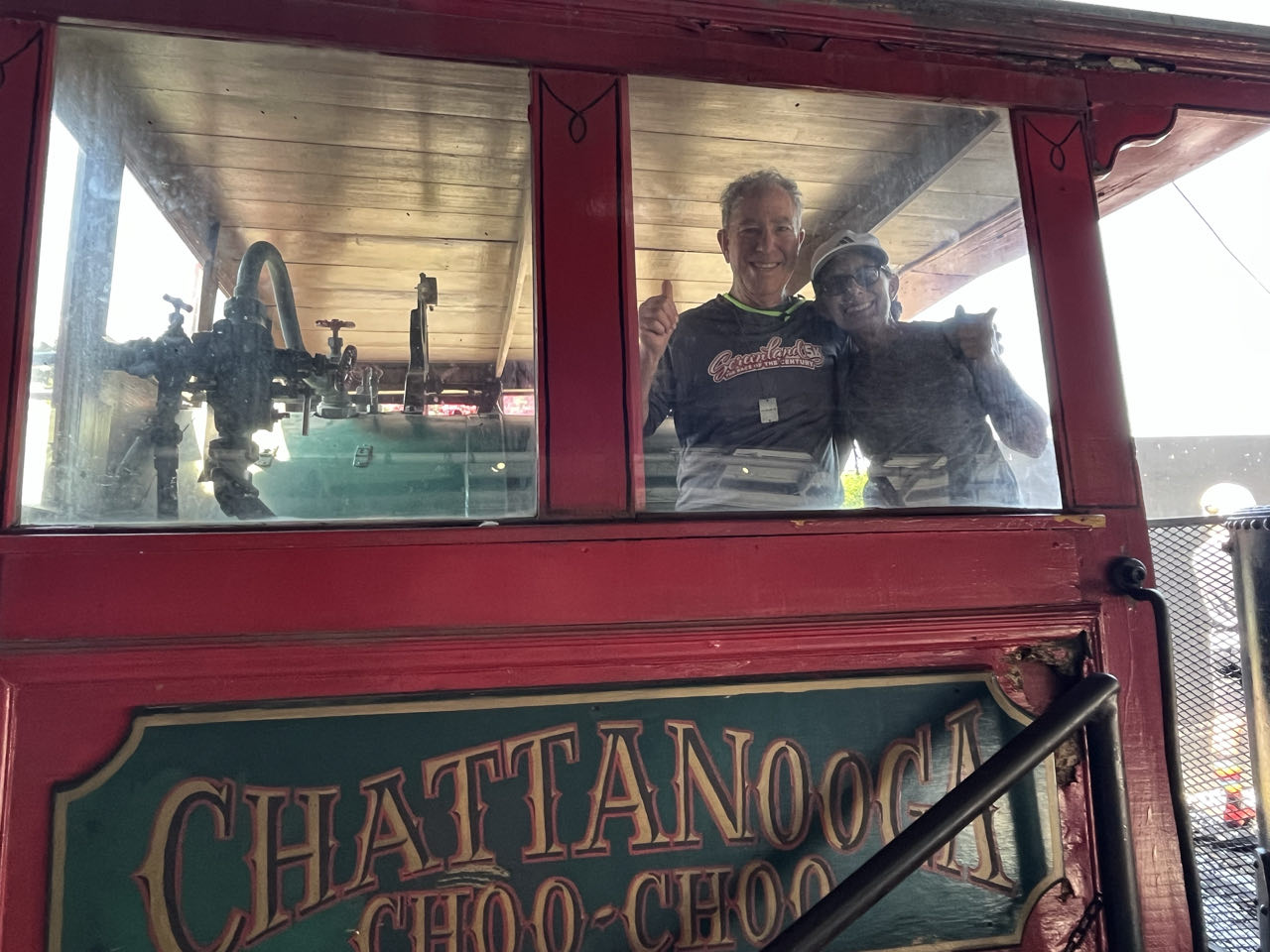EXPLORING THE SOUTH & SOUTHEAST USA
WRITTEN BY JEFF ZIMERMAN:
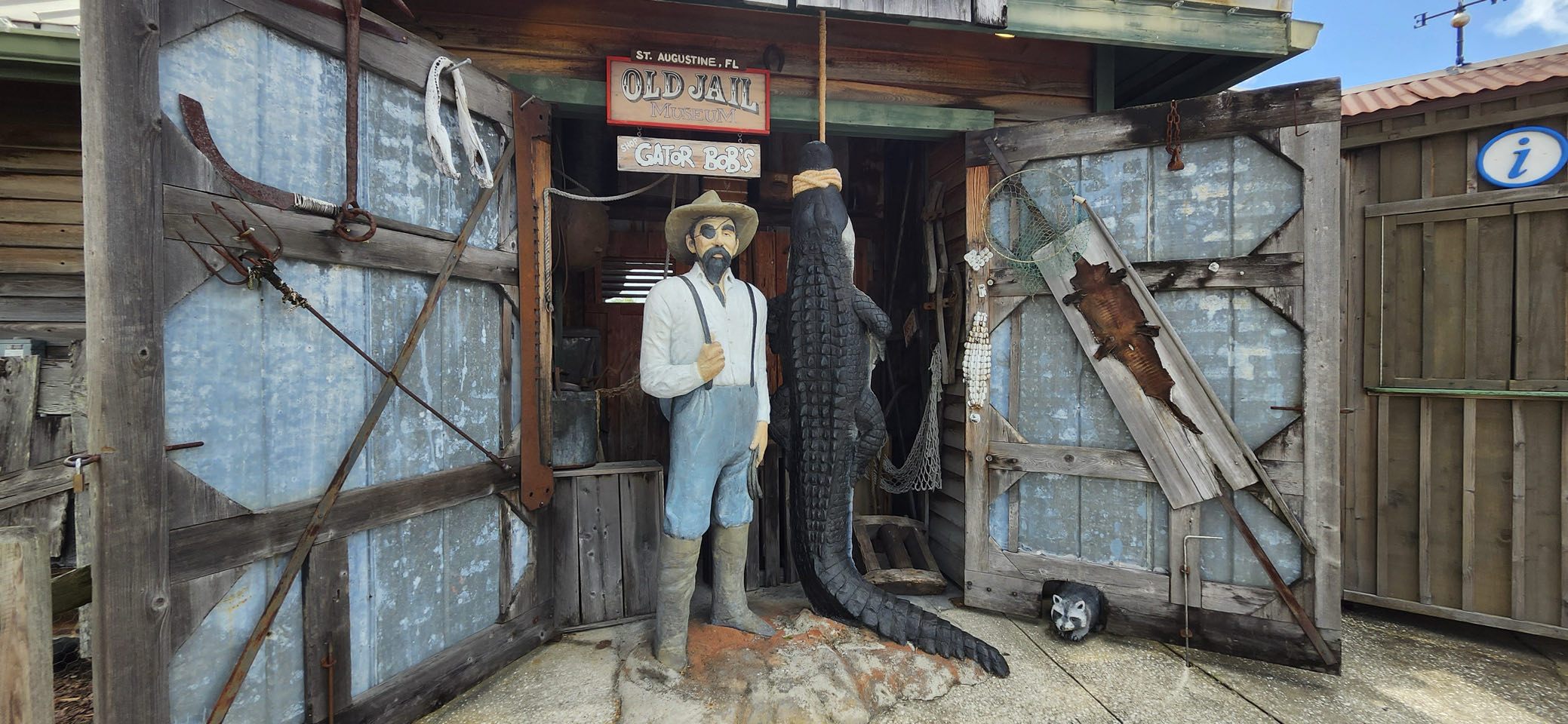
St. Augustine, Florida stands as a testament to centuries of history, holding the title of the oldest continuously occupied European-established settlement in the continental United States. A visit to St. Augustine offers a captivating adventure of historical immersion.
From the moment you set foot in St. Augustine, you’re transported to a bygone era. The city’s Spanish heritage is vividly preserved in its unique architecture and layout, particularly evident in the narrow streets and balconied houses found throughout the Historic Colonial District. A walk along St. George Street is a must for any visitor, showcasing a vibrant collection of local artisan shops and galleries. We also walked and explored Flagler College, Cathedral Basilica of St. Augustine, the oldest cathedral in the U.S., and additional interesting architecture.
The Castillo de San Marcos, the oldest masonry fort in the continental United States, offers self-guided tours, and don’t miss the opportunity to witness the Historic Weapons Demonstrations at the Castillo, bringing history alive cannon fire.
We loved & highly recommend the St. Augustine Lighthouse & Maritime Museum, and the climb to the top of the 1874 lighthouse which rewarded us with breathtaking views of the city and Anastasia State Park. https://www.staugustinelighthouse.org/
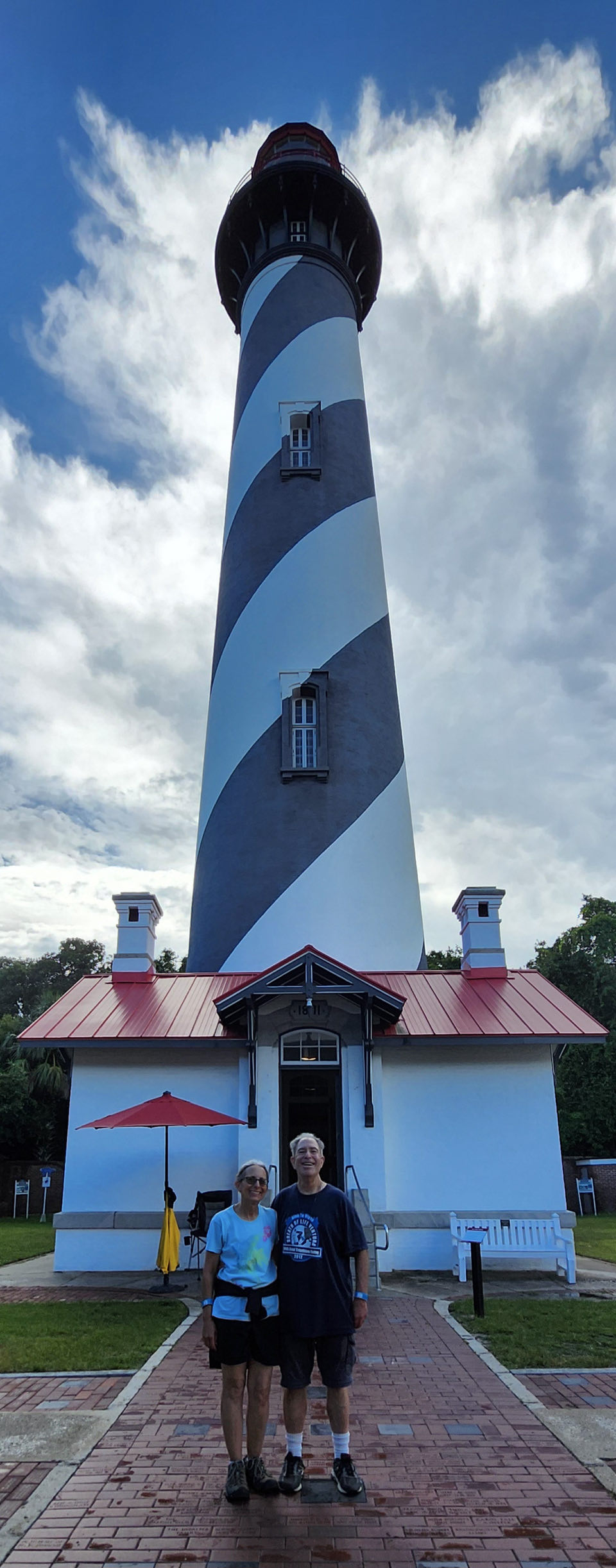
We also enjoyed the historical trolley ride thru the city with the driver providing a historical narrative of St Augustine. https://www.trolleytours.com/st-augustine
We also stopped by The First Congregation Sons of Israel, a historic synagogue founded in 1908. Researchers have found evidence that Jews arrived in St. Augustine in 1565. https://www.firstcongregationsonsofisrael.com/
Overall, St. Augustine offers a memorable experience for anyone seeking a blend of rich history, cultural immersion, and coastal beauty. It’s a place where you can walk through centuries of history and then relax on a beautiful beach, creating an unforgettable vacation. For St. Augustine tourism information, call the visitor’s bureau at 904-825-1000, or [email protected].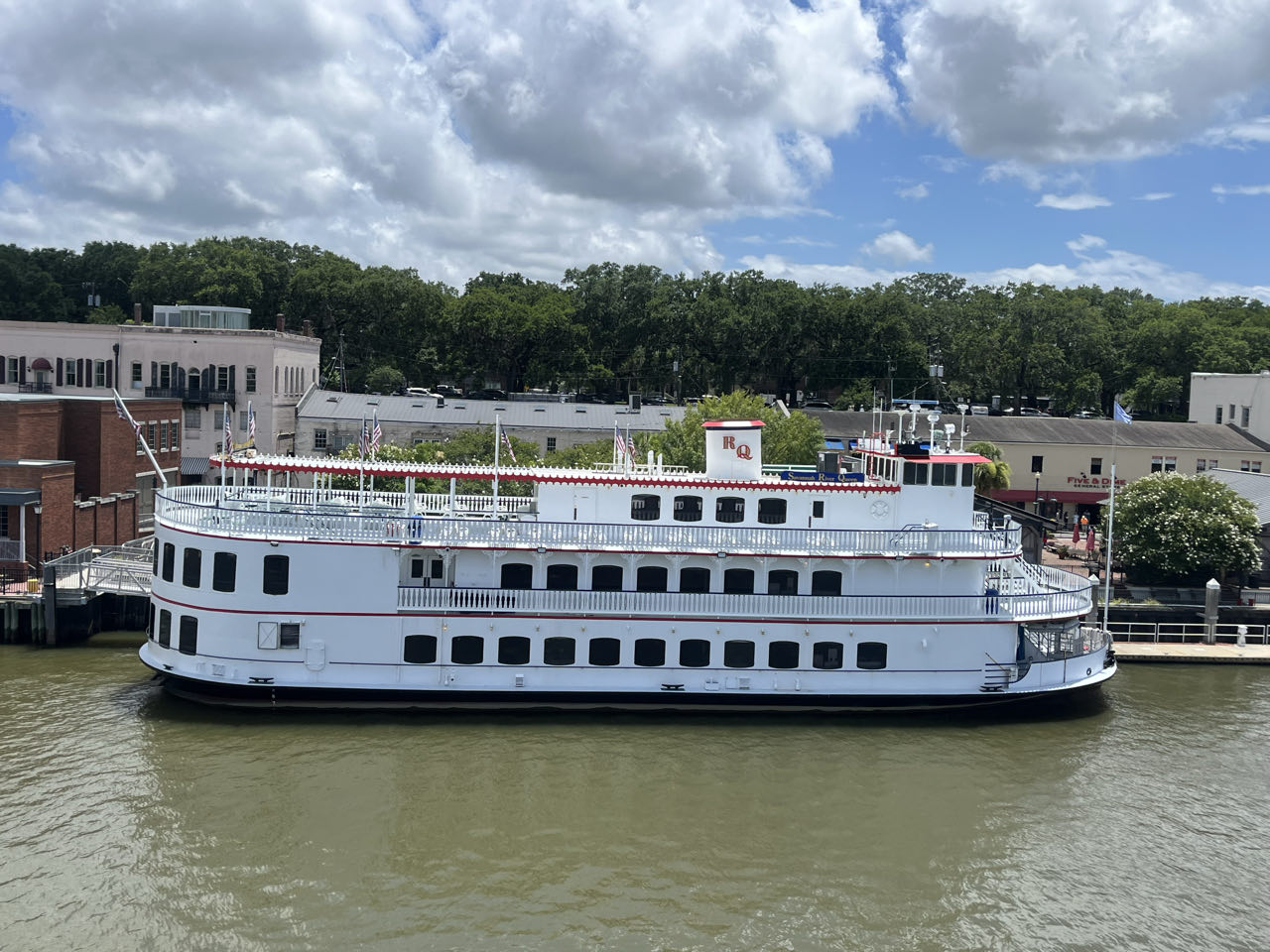
Savannah Georgia was our next stop and boasts a rich history, dating back to its founding as Georgia’s first city in 1733. The Historic District, a designated National Historic Landmark, features beautifully preserved antebellum mansions, charming squares, and cobblestone streets like River Street. Known as the “Hostess City of the South,” Savannah is renowned for its warm Southern hospitality. Some of our highlights:
We recommend a tour of Congregation Mickve Israel built in 1733, a beautiful synagogue that is the 3rd oldest in America and is still very active today. https://www.mickveisrael.org/
We had a delightful afternoon taking the Georgia Queen Riverboat for a historical narrative tour on the Savannah River, which divides Georgia and South Carolina and Georgia. https://savannahriverboat.com/georgia-queen/
We also enjoyed the Old Town Trolley sightseeing tour highlighting Savannah history. The driver was very knowledgeable with a keen sense of humor. https://www.trolleytours.com/savannah
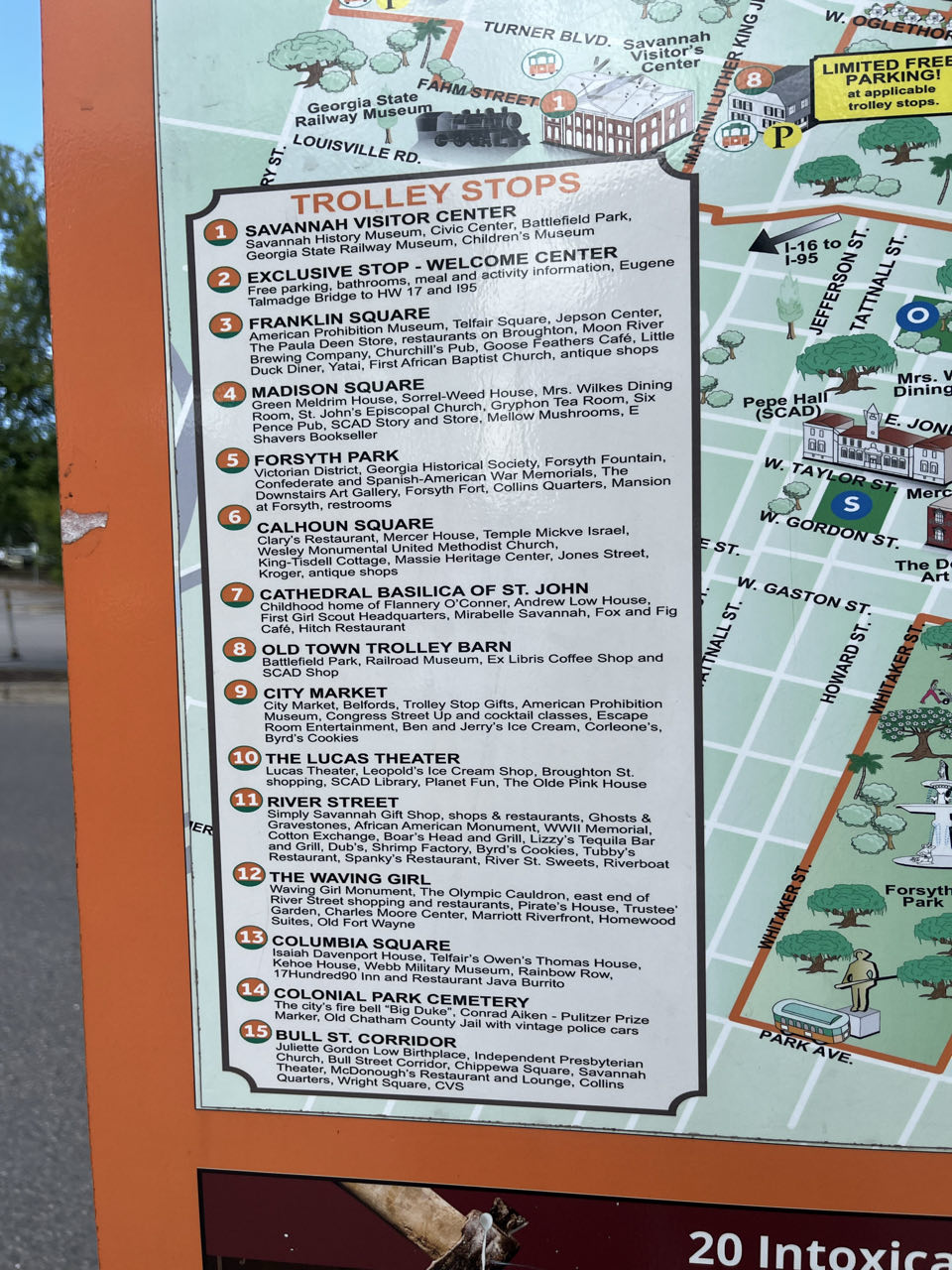
We explored the city with lots of walking where we saw many beautiful mansions and homes, as well as the 22 squares that the city is known for. 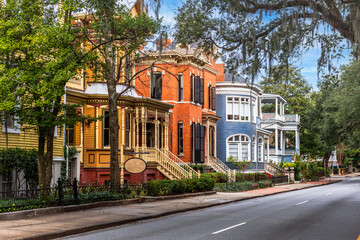
We also recommend the educational and interactive Freedom Trail Tour with Johnnie Brown. We were driven in a van where we learned about Savannah’s rich African-American history narrated by Johnnie. We stopped and visited many historic spots.. Johnnie is a wonderful storyteller who brings the rich, complex, and often overlooked history of African Americans to life. https://visitsavannah.com/profile/the-freedom-trail-tour/4801
In summary, Savannah offers a blend of history, culture, delicious food, natural beauty, and unique experiences, making it a compelling destination for a diverse range of travelers. We will definitely be back. For further details contact the Savannah Tourism Bureau [email protected].
Charleston, South Carolina is a city brimming with Southern charm, rich history, and vibrant culture that entices visitors year-round. Some of our highlights: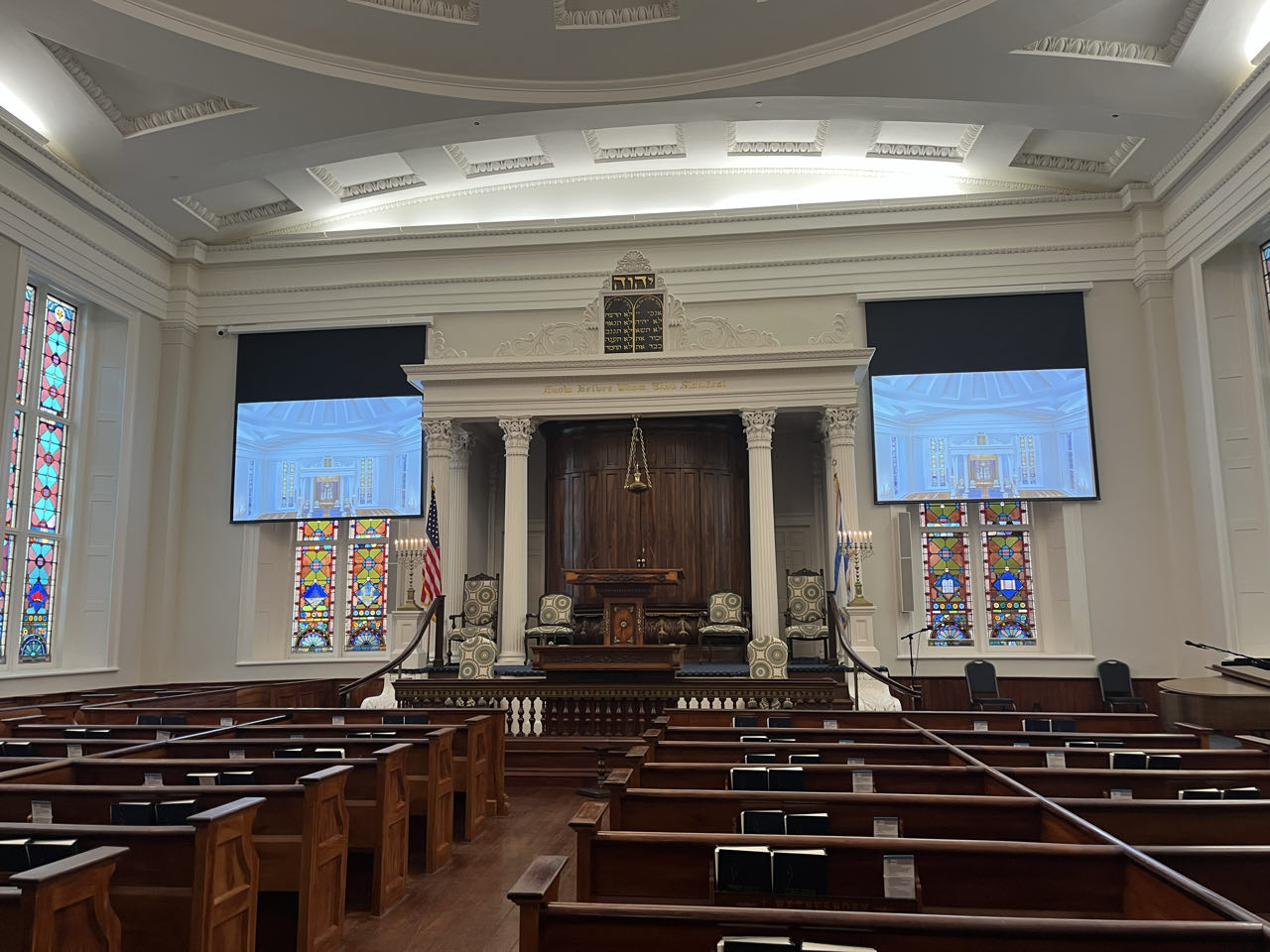
We spent a very informative morning at Kahal Kadosh Beth Elohim (KKBE), a synagogue founded in 1749. It stands as the fourth oldest Jewish congregation in the United States and is considered the birthplace of Reform Judaism in America. KKBE also boasts the oldest synagogue sanctuary in continuous use. You can arrange tours at https://www.kkbe.org/.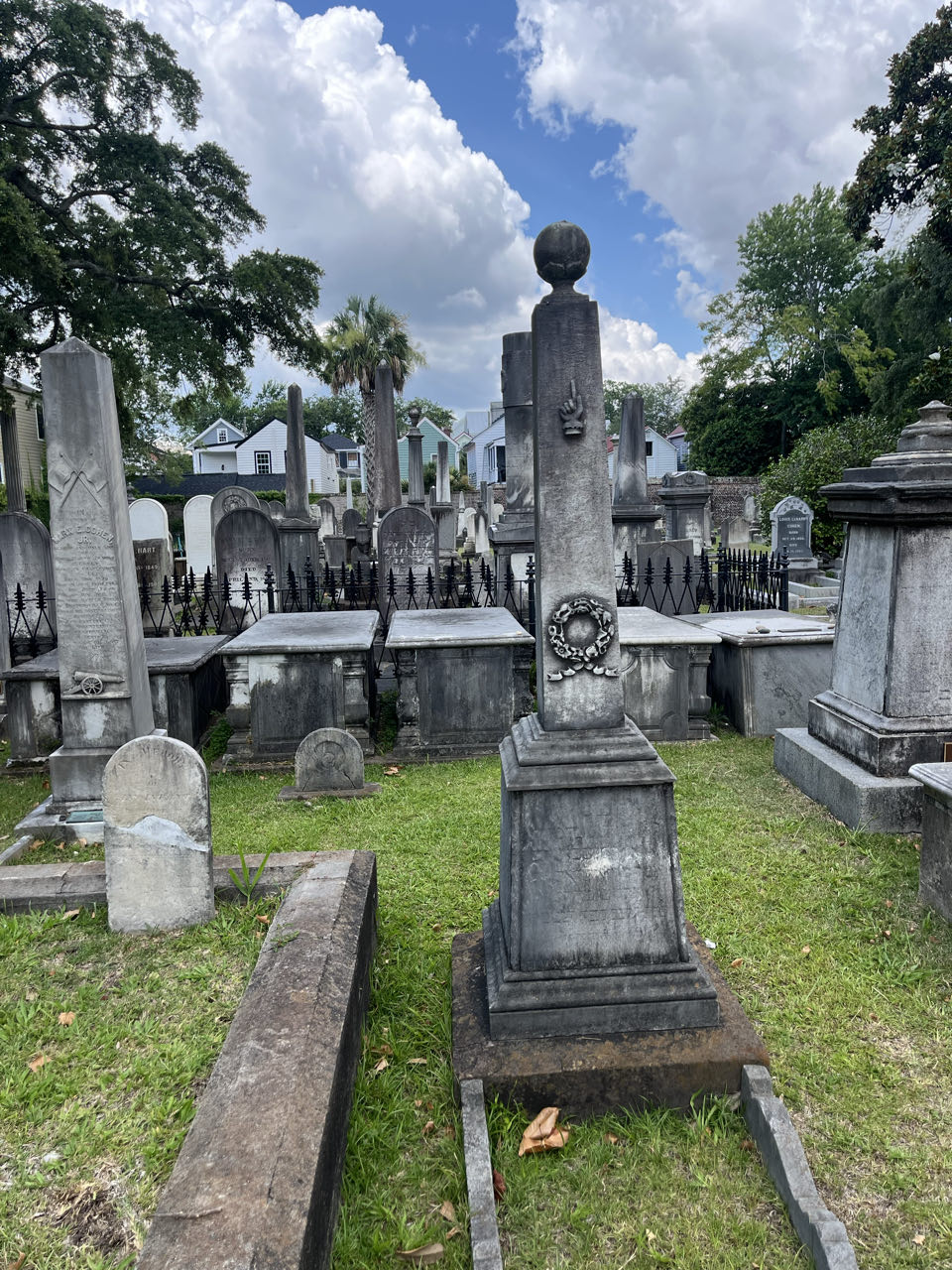
We then headed to Coming Street Cemetery, established in 1762 and is the oldest Jewish burial ground in the South. This historic cemetery is home to approximately 600 marble and brownstone grave markers, many dating back to the late 18th and early 19th centuries.
The tour guide for both of these locations was Ronnie Ludwin, who is the founder of Charleston Jewish Tours. https://charlestonjewishtours.com/ Ronnie has incredible knowledge, passion and insights. He showed us hidden gems that would have been undiscovered otherwise making the tour into a truly amazing experience. We definitely recommend Charleston Jewish Tours on your next visit. Visiting these sites provided a unique and moving opportunity to explore the rich history and enduring legacy of the Jewish community in Charleston.
We took a delightful afternoon Carriage ride that gave us a glimpse into the city’s rich history and architecture. We saw historic landmarks, Antebellum mansions, cobblestone streets and charming residential areas, accompanied by stories of the city’s past. We recommend Palmetto Carriage Works; [email protected].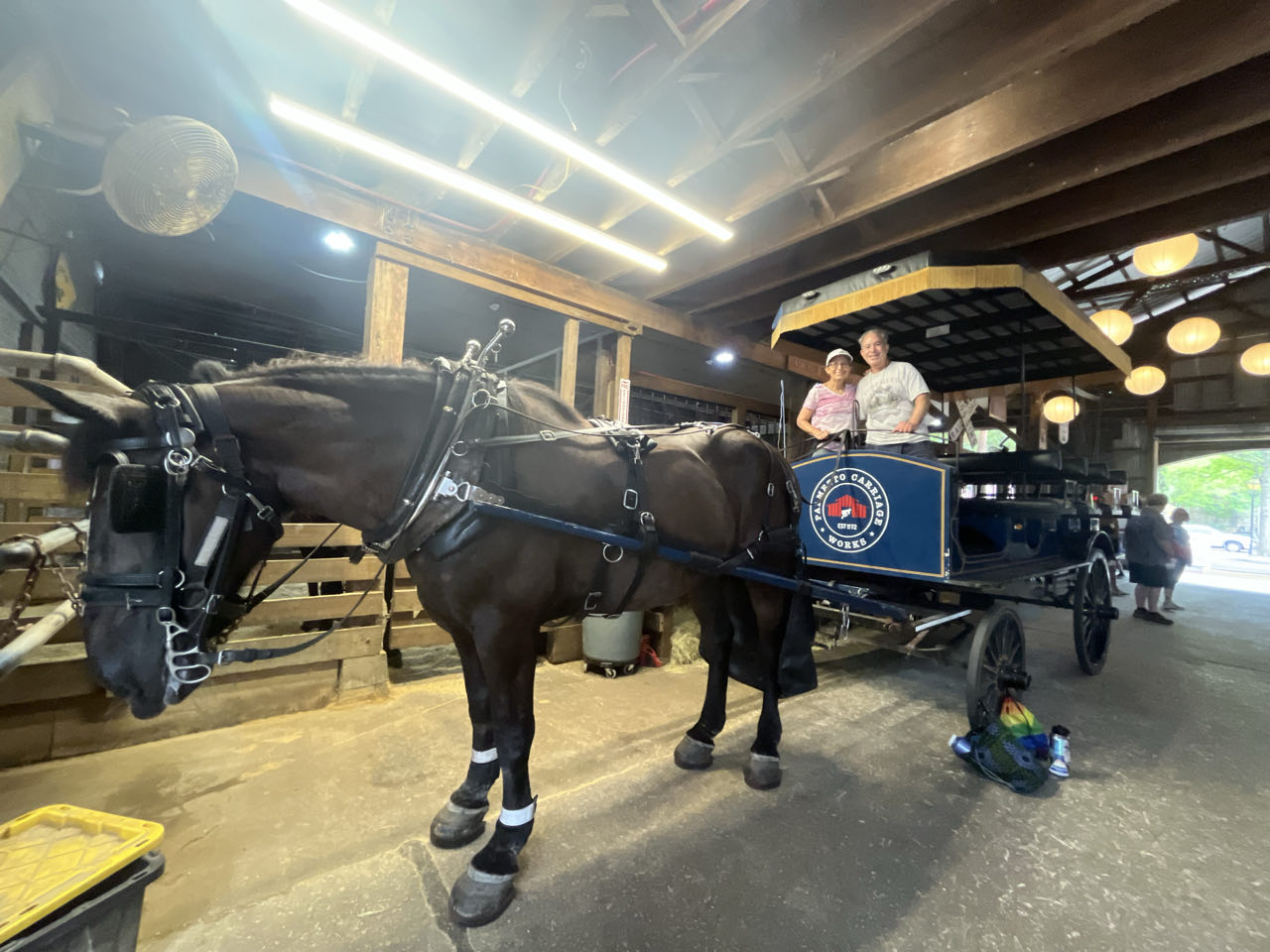
In contrast to the romanticized view offered by the carriage tours, we headed to the Old Slave Mart Museum, which serves as a powerful and necessary reminder of Charleston’s role in the transatlantic slave trade. Housed in what was once a slave auction gallery, the museum confronts the brutality and dehumanization of slavery head-on. We learned about the lives of enslaved people, their journeys, and the enduring legacy of this dark period in American history. The museum aims to educate and ensure that the lessons of the past are not forgotten. https://theoldslavemartmuseum.org/.
We next walked to The Old Exchange, Charleston’s Commercial Hub and Provost Dungeon, often referred to simply as The Exchange. It represents Charleston’s economic and political importance throughout history. This building has served various functions, from a customs house and public market to a British prison during the Revolutionary War. Its walls whisper tales of commerce, legal proceedings, and imprisonment, reflecting Charleston’s evolution as a major port city.
https://www.oldexchange.org/
We continued the day strolling through Charleston’s historic neighborhoods, which is like stepping back in time. Antebellum mansions with lush gardens line the streets, showcasing intricate ironwork and vibrant hues. The architecture tells a story of wealth and prosperity, but also implicitly reminds us of the enslaved labor that built and maintained these grand structures. Exploring areas like the Battery and Rainbow Row offered us a breathtaking beauty, but also prompted reflection on the complex social fabric of historical Charleston.
We took a powerful visit to McLeod Plantation Historic Site, which provided another lens through which to understand Charleston’s history, focusing specifically on plantation life and the experiences of enslaved individuals. Unlike some plantations that romanticize the past, McLeod emphasizes the lives and contributions of the enslaved people who worked the land. The site preserves slave dwellings and offers a more nuanced perspective on the realities of plantation life, fostering discussions about labor, resistance, and the enduring impact of slavery. https://www.ccprc.com/1447/McLeod-Plantation-Historic-Site
In conclusion, Charleston’s beauty is undeniable. A meaningful visit requires acknowledging and engaging with its multifaceted history. Experiencing a carriage ride, confronting the realities at the Old Slave Mart Museum, understanding the role of structures like The Exchange, wandering through historic streets, and visiting sites like McLeod Plantation can provide a deeper understanding of Charleston’s past and its impact on the present. Acknowledging all layers of this history, both the beautiful and the painful, allows for a true appreciation of Charleston. Charleston Visitors Bureau: https://www.charlestoncvb.com/
Chattanooga, Tennessee, offers a vibrant blend of natural beauty, historical significance, and unique cultural experiences. From breathtaking mountain views to a storied congregation, here’s a look at some of its most compelling destinations.
Affectionately dubbed “The Scenic City,” Chattanooga’s stunning landscapes are matched only by its remarkable transformation from an industrial hub to an outdoor adventure haven. Some of our highlights included:
We had a wonderful morning exploring Rock City Gardens: a whimsical wonderland atop Lookout Mountain. Just a short drive from downtown Chattanooga, Rock City Gardens beckons visitors to explore its ancient rock formations, lush gardens, and panoramic vistas. We wandered along a 4,100-foot pathway, marveling at unique rock formations like Balanced Rock and squeezing through tight passages like Fat Man’s Squeeze. We took in stunning views that claim to encompass seven states, a claim dating back to the attraction’s early days. We then stepped into a world of vibrant, blacklight-responsive gnome and fairytale character sculptures within the rock caverns/caves. Rock City is often credited as the birthplace of miniature golf, thanks to the popularity of the book Tom Thumb. https://www.seerockcity.com/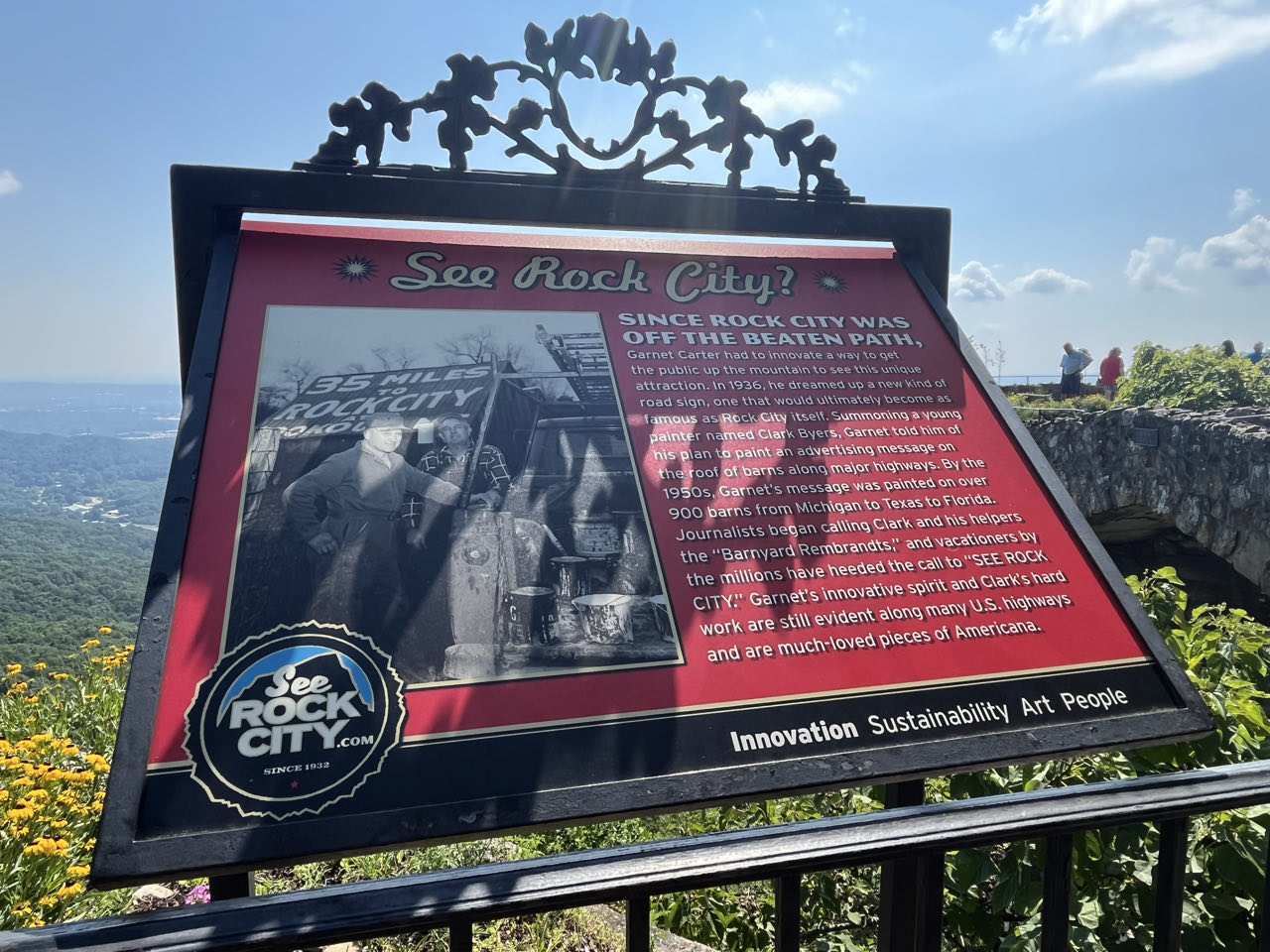
Next up was Ruby Falls, the tallest underground waterfall in America. Nestled deep within Lookout Mountain is a spectacular 145-foot underground waterfall. We embarked on a journey through fascinating cave passages, adorned with unique rock formations, stalactites, and stalagmites. Discovered in 1928, Ruby Falls is not just a natural wonder but also holds historical significance. The cave served various purposes throughout its history, including a hospital during the Civil War and a legendary hideout for moonshine runners. https://www.rubyfalls.com/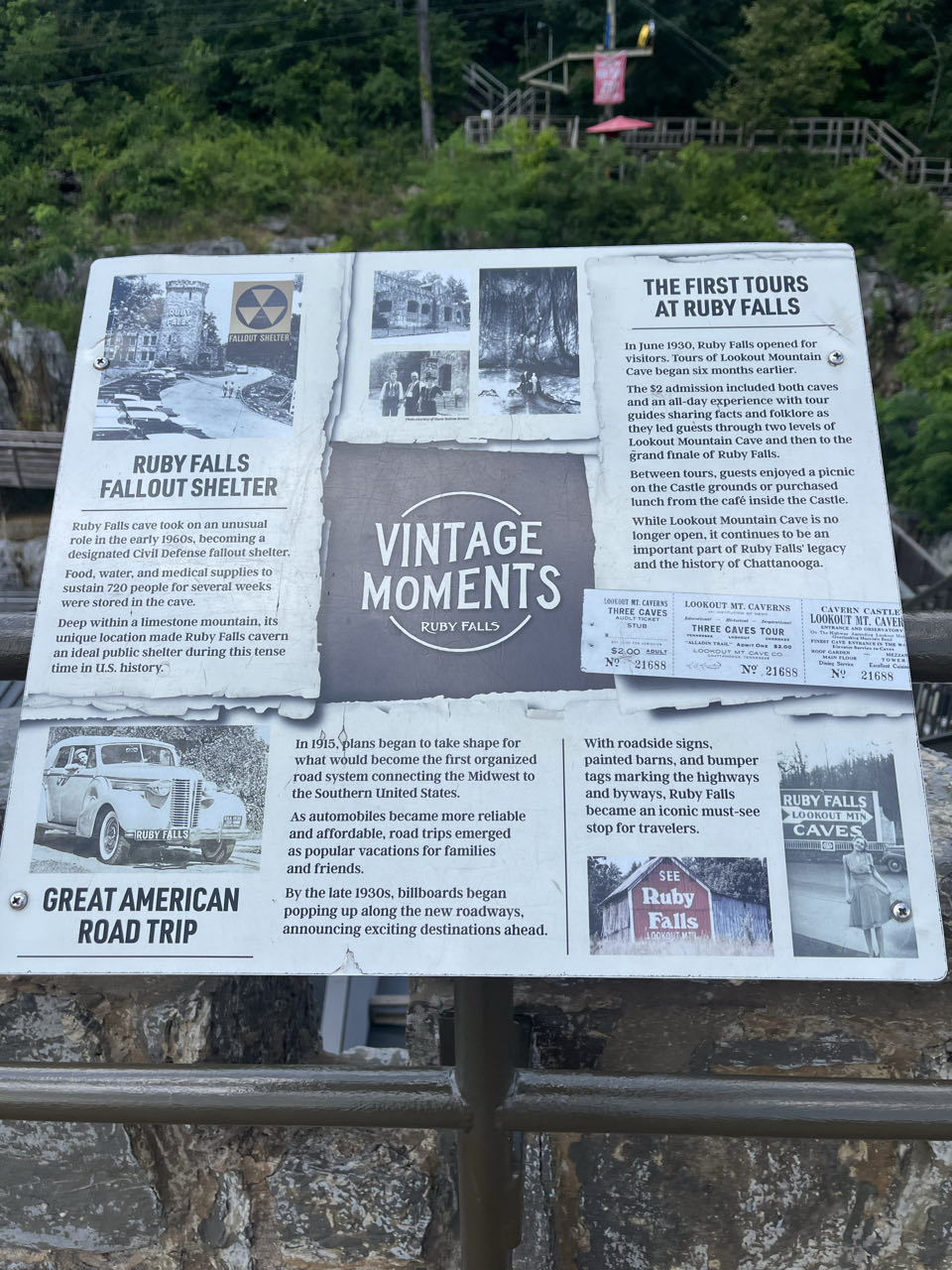
We then explored Chattanooga Choo Choo. Immortalized in Glenn Miller’s famous song, the Chattanooga Choo Choo began its life as a bustling railway terminal and has since been transformed into a unique hotel and entertainment complex. Spend the night at a renovated train cars dating back to the 1920’s. https://choochoo.com/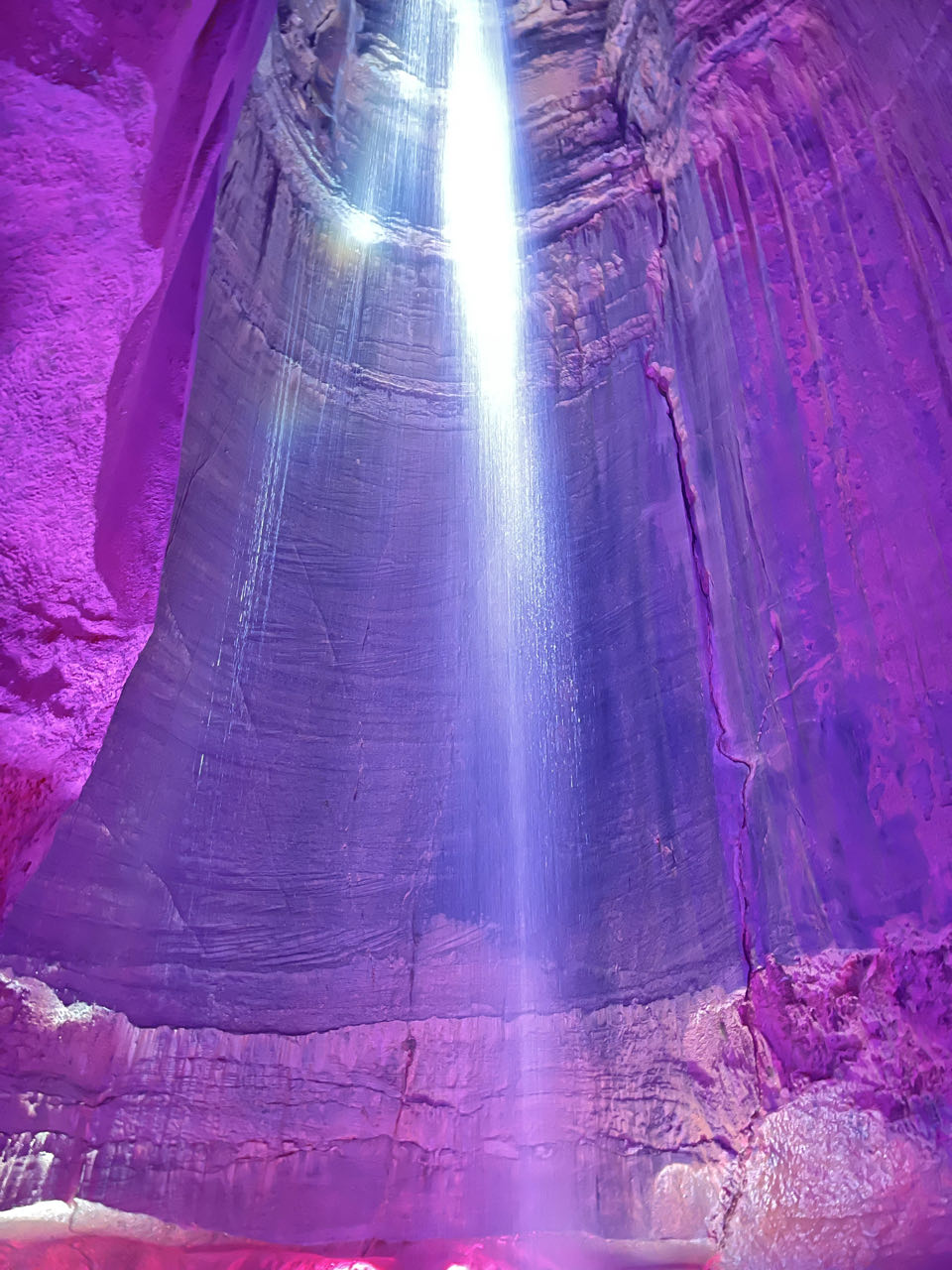
We also visited the historical synagogue Mizpah (Lookout) Congregation, which was founded in 1866. A Jewish settlement in Chattanooga can be traced back to before the U.S. Civil War. https://www.mizpahcongregation.org/
Chattanooga’s unique attractions offer a rich tapestry of experiences, blending natural wonders with compelling history and vibrant community spirit. Whether you’re seeking adventure or historical insights, Chattanooga provides a captivating journey for every visitor. Chattanooga tourism information can be found at https://www.visitchattanooga.com/
